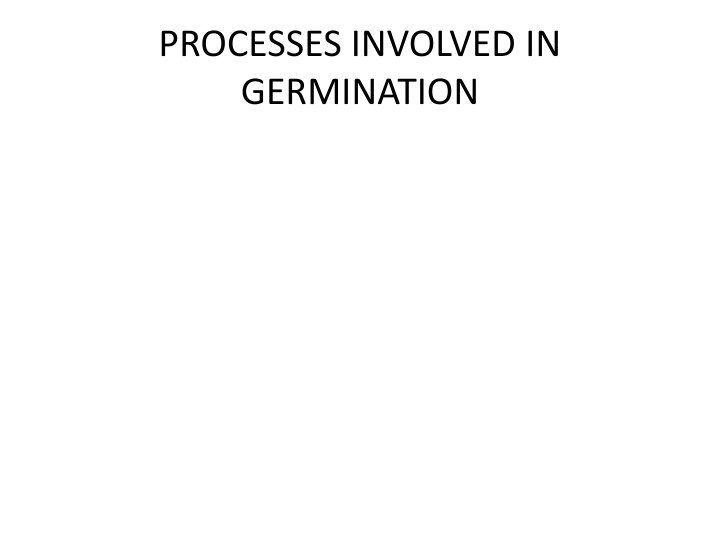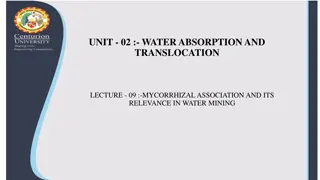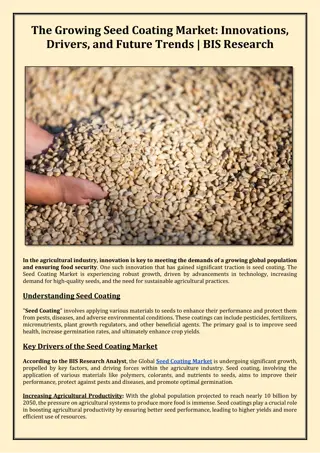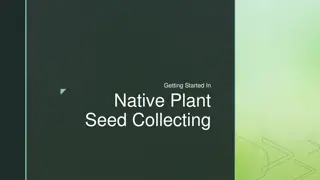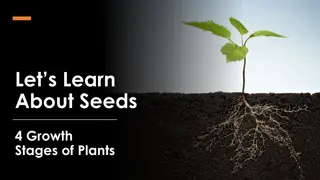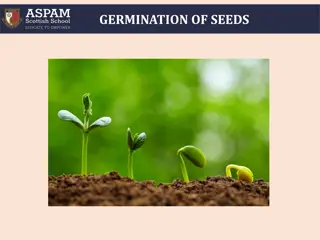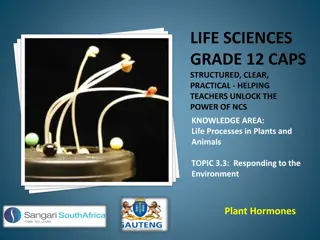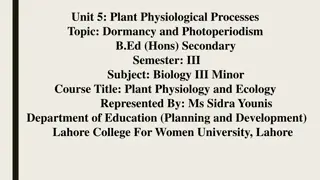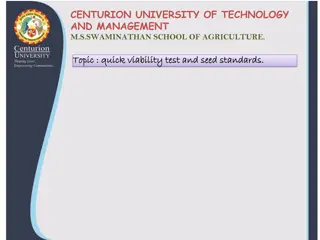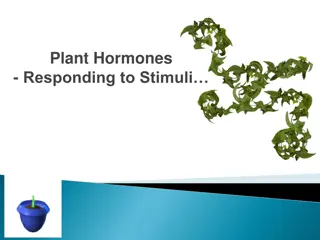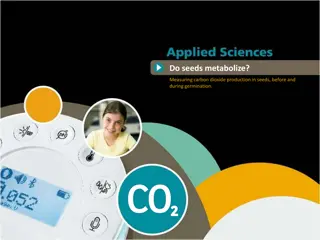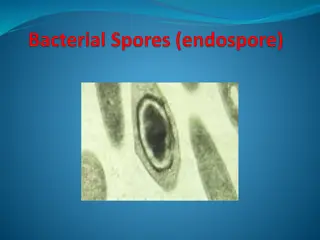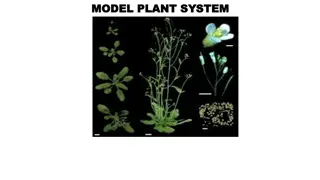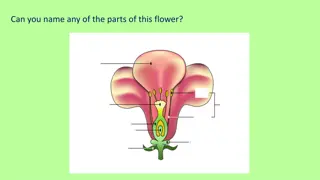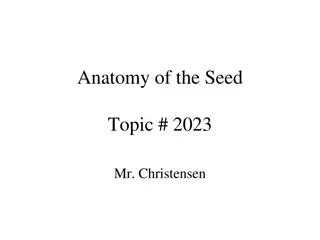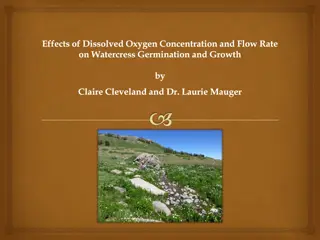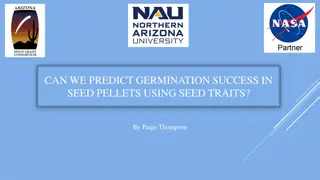PROCESSES INVOLVED IN GERMINATION
Intricate processes of seed germination, including water imbibition, activation of enzymes, production of essential molecules, mobilization of food materials, and internal factors affecting germination such as genetic patterns, ecological types, seed maturity, and presence of promoting or inhibiting substances. Discover the roles of hormones like coumarin, phylocaline, florigen, and more in various growth stages of plants.
Download Presentation

Please find below an Image/Link to download the presentation.
The content on the website is provided AS IS for your information and personal use only. It may not be sold, licensed, or shared on other websites without obtaining consent from the author.If you encounter any issues during the download, it is possible that the publisher has removed the file from their server.
You are allowed to download the files provided on this website for personal or commercial use, subject to the condition that they are used lawfully. All files are the property of their respective owners.
The content on the website is provided AS IS for your information and personal use only. It may not be sold, licensed, or shared on other websites without obtaining consent from the author.
E N D
Presentation Transcript
PROCESSES INVOLVED IN GERMINATION
INTERNAL FACTORS AFFECTING SEED GERMINATION
Ecological type of seed population (ecotype)
Presence or absence of germination promoting and inhibiting substances
General chemical and structural composition of seeds.
Coumarin In roots Pyhllocaline For leaf growth In cotyledon Florigen Induces flower formation In leaf acidFor healing of wound through callus For stem elongation Traumatic
cells around the wound. cells around the wound Inhibits germination of some seeds Retards growth of roots in some plant speciesIn plant tissues In damaged Coumarin
COMPARISON OF SOME KNOWN EFFECTS OF PLANT HORMONES
Promotes Parthenocarpy Promotes of flowering Promotes or bolting Promotes Onset Promotes Stem elongation Promotes Apical dominance in Promotes Leaf expansion Promotes formation Root elongation Promotes buds Counteracts Bud Promotes
the short day plant vegetative. The so- called critical day-length differs with different species. Examples of short plants are Nicotiana tabacum, Xanthium pensylvanicum and Glycine max (soy beans), sweet potato, hemp (Canabis sativa).
critical day-length is exceeded. Examples include sugar beet (Beta vulgaris), Spinach (Spinaceae oleracea) and Hyoscyamus niger.
wide range of day-lengths from relatively short photoperiods to continuous illumination. Example include Tomato (Lycopersicum esculentum), Mirabilis (Four-O-clock), cotton (goossypium), certain varieties of tobacco, pisum salivum (garden pea).
under day-length within a certain range and fail to flower under either longer or shorter photoperiods e.g. some varieties of sugar cane.
range of photoperiods favourable to flowering and the range of those which are not, is much sharper in some kinds of plants than in others.
may fulfill this role at least in part. Some complementary loci may be the bud, or leaf-like cotyledon as in some plants, while in some herbaceous species the stem serve the role especially when in defoliated form.
not species and has the same property in both day and long day plants. The distance over which florigen are transported in plants varies with the kind of plant and environmental conditions to which it is subjected. Translocation occurs in living cells and in petioles and stems through the phloem tissues.
level of gibberellins-like hormone must be maintained in long day plants for the production of florigen. In short day plants, this situation is reversed, a low level of the gibberellins-like hormone being optimum for a flowering response.
and Far Red radiation have also been implicated in flower formation. These same pigments have also been implicated in most of the phytomorphogenetical problems.
leaves of stinging nettle (Flergaaestuans), and pods of Mucuna pruriers, high level of nitrates (e.g. Amaranthus spp) or parasitic on crops (e.g. Striga spp, Cassytha spp and Buchnera spp).
possess these features are usually of large size. They tend to grow rapidly, and cover extensive areas. Examples of these weeds are Rottebollia cochinchinensis and Andropogon spp.
High reproductive capacity: Many annual weeds have the ability to produce large quantity of seeds.
propagates from seed and tubers or rhizome. Examples are purple and yellow nutsedge (Cyperus rotundus and C. asculents respectively) which combine a well-developed tuber system with moderate production of viable seeds.
weeds. Consequently weeds are found not only in cultivated fields, but also in tennis courts and other recreational sites. Also they are known to grow through cracks in concrete and asphalt pavements.
consist of large populations; examples are Euphorbia heterophylla, Ageratum conyzoides and Aspilia Africana. Weeds such as these are able to compete better with crops because of the numerical superiority that the weeds have over the crops with which they are associated.
morphological feature such as throns, prickles, etc. that make them objectionable. Examples of these weeds are Amaranthus spinosus, Acanthus montanus and Ficus exasperate.
deep rooted, others have intraspecific variations while others exhibit great plasticity of growth. For example Euphorbia heteroplylla is very competitive in food legumes such as cowpea and soya beans because of its rapid growth and ability to form canopy over those crops.
includes competition with crops for nutrients, light and water. it also include the introduction of chemical into the soil that will adversely affect the growth of crop plants (allelopathy).
agricultural products. The presence of weeds seeds such as those Rottboellia chinensis in maize or rice. Solanum nigrum in cowpea or soya beans will reduce quality of each of these crops.
